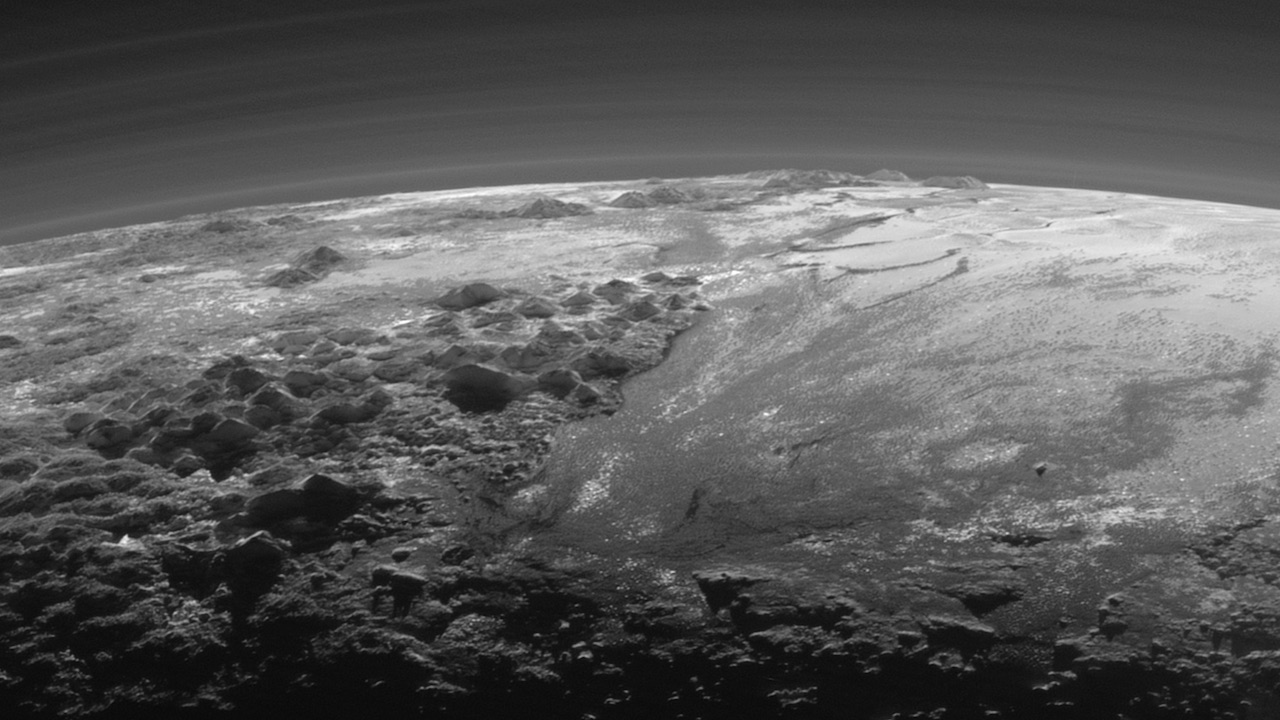This is what a sunset looks like on Pluto
Bit chilly, though

A few months back, when Nasa's New Horizon's probe whizzed past the dwarf planet Pluto on the edge of our solar system, it took a lot of holiday snaps. Now, it's slowly sending them back, and the latest batch included this amazing shot.
What you're seeing is about 780 miles of the surface of the icy world, viewed from a distance of about 18,000 kilometres as the dim, distant Sun sets in the background. But it's not just a pretty photo - it also tells us a lot of science.
For starters, it shows us two ranges of ice mountains - Norgay Montes and Hillary Montes, named after the first people to climb the highest mountain on Earth. Each rises up to 3,500 metres above the surface of Pluto. The photo sheds light on how ice flows into a vast, flat, glacial plain nearby.
Directly Comparable To Earth
Above the surface, the banded region shows that Pluto has a distinctly-layered atmosphere that extends about 100 kilometres above the surface. It's mostly made up of nitrogen - the same nitrogen that freezes into ice on the surface.
"We did not expect to find hints of a nitrogen-based glacial cycle on Pluto operating in the frigid conditions of the outer solar system," said Alan Howard of the University of Virginia, a member of the mission's geology, geophysics and imaging team.
"Driven by dim sunlight, this would be directly comparable to the hydrological cycle that feeds ice caps on Earth, where water is evaporated from the oceans, falls as snow and returns to the seas through glacial flow."
New Horizons has only sent back about five percent of its flyby data so far, so expect many more exciting shots to pop up over the next few months.
Get daily insight, inspiration and deals in your inbox
Sign up for breaking news, reviews, opinion, top tech deals, and more.
Image credit: NASA/JHUAPL/SwRI
